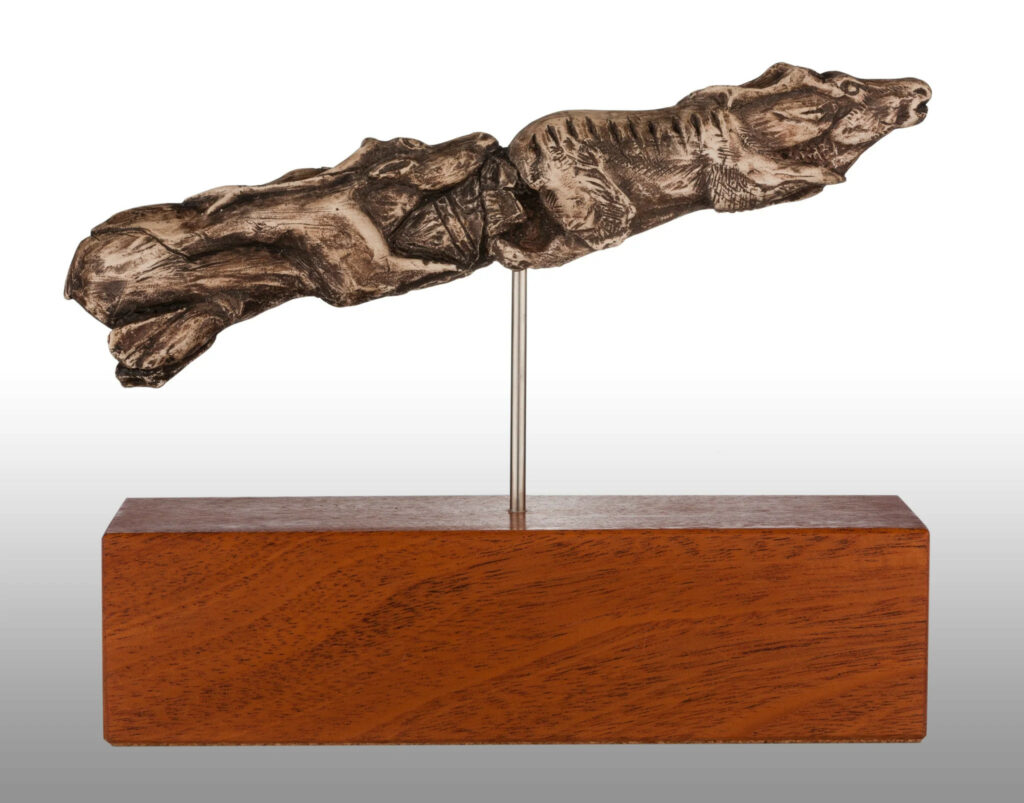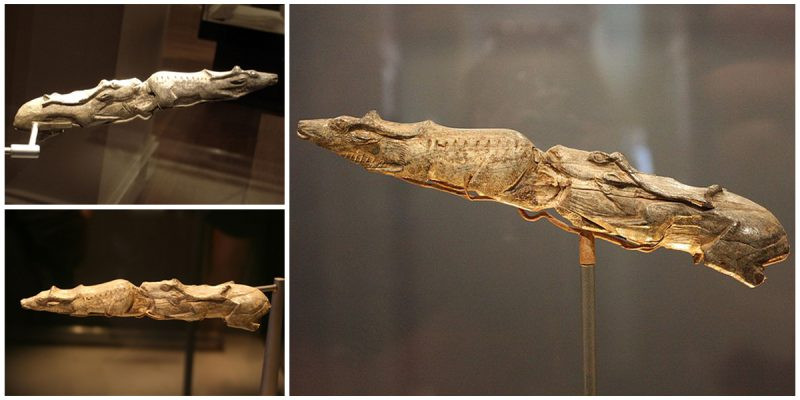Revealing Ancient Craftsmanship
In the world of prehistoric art, few creations ignite the imagination like the “Swimming Reindeer.” This extraordinary carving, estimated to be around 13,000 years old, exemplifies the artistic talent of our Ice Age ancestors. Unearthed in 1866 near Bruniquel, France, this ancient treasure now resides within the esteemed Christy Collection at the British Museum.

A Fortuitous Find
The tale of the Swimming Reindeer’s rise from anonymity to recognition is one of luck and acute insight. Initially discovered in two fragments by French engineer Peccedeu de l’Isle, it wasn’t until 1904 that French archaeologist Abbé Henri Breuil identified these pieces as components of a single sculpture. This discovery revealed a breathtaking portrayal of a male and female reindeer, seemingly caught in the act of migration.

Artistry Ahead of Its Era
Exceptional Craftsmanship from the Ice Age

Sculpted from mammoth tusk with stone tools, the Swimming Reindeer exhibits an astonishing level of detail and refinement. The sculpture accurately depicts the animals with their legs extended backward and jaws raised, creating a lively image of reindeer swimming through a river.
A Glimpse into Prehistoric Existence
Beyond being a stunning artifact, the Swimming Reindeer provides essential insights into the lives of our early ancestors. It demonstrates a deep comprehension of animal behavior and highlights the strong bond between humans and the natural environment. Scholars suggest that this piece was likely crafted during the fall migration season, a vital period for Ice Age communities that depended on reindeer for their survival.

The Importance of Ice Age Art
Expressions Beyond Function: Early Spiritual Insights
Unlike tools or weapons, the Swimming Reindeer does not seem to serve any practical purpose. Rather, it embodies a pure form of artistic expression that may reflect early spiritual beliefs within human societies. This artwork, along with other Ice Age creations like the 23,000-year-old Lespugue Venus—which later influenced Pablo Picasso—illustrates the significant role ancient art has played in shaping human culture.

A Creative Heritage
The Swimming Reindeer is part of a larger narrative that includes other notable Ice Age finds, such as the 12,500-year-old Mammoth Spear, offering a vivid portrayal of prehistoric life. These artifacts not only highlight our ancestors’ survival skills but also their appreciation for beauty and symbolism.

Conclusion: An Enduring Treasure
As we admire the Swimming Reindeer today, we are reminded of art’s timeless ability to transcend eras and connect us with our ancient heritage. This 13,000-year-old masterpiece continues to enchant audiences, providing a rare insight into the artistic talents, daily lives, and possibly even the spiritual beliefs of our Ice Age predecessors. In its graceful lines and intricate details, we discover not just a sculpture, but a bridge that spans thousands of years, linking us to the very beginnings of human artistic expression.

